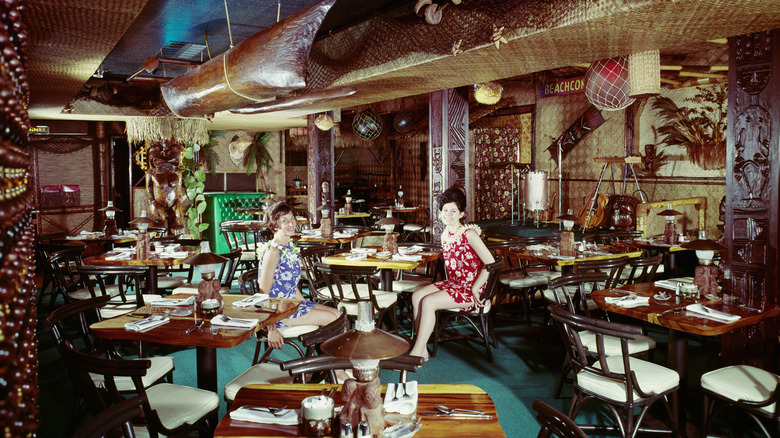The Vintage 1940s Bacon Wrapped Appetizer You Rarely See Anymore
Everyone loves a finger food. But back in the 1940s and '50s, Americans took the concept of bite-sized dining to a whole new level. 'Twas the golden age of cocktail parties, and hors d'oeuvre platters were the all-important complement to all those martinis and old fashioneds guests were throwing back. From beef tongue canapés to all-aspic-everything, many of these once-popular old school appetizers would be considered, shall we say, "interesting" by today's standards (which explains why we rarely see them anymore). If there's one thing that hasn't changed, however, it's how much we love wrapping things up in bacon and eating them with a toothpick.
Case in point? A little dish called rumaki. An iconic app that emerged from the burgeoning tiki-themed dining scene of the era, it consists of chicken livers and water chestnuts marinated in a mixture of soy sauce, ginger, and brown sugar. The ingredients are then wrapped in strips of bacon, skewered with a toothpick, and fried or baked to crispy perfection. Flavor-wise, it combines elements of the sweet, savory, and salty, while texturally, the crunch of the water chestnut and bacon plays off the tenderness of the chicken liver, supplying a satisfying finishing touch.
At the time, the dish's use of bacon as both a structural and flavorful component was quite the innovation, and one that we can still see the influence of in plenty of modern menu items. But what really bolstered its appeal to mid-century diners?
Rumaki was born of the mid-century Polynesian craze
Rumaki's origins (and subsequent rise in popularity) can be traced to the faux-Polynesian restaurants that dominated these decades. Victor Bergeron, founder of the theatrical tiki chain Trader Vic's, is often credited as the creator of the bacon-wrapped bite (although he claimed it was a Chinese dish he discovered by way of Hawaii). The name "rumaki" itself, meanwhile, may have been a play on the Japanese dish, harumaki, a type of pork spring roll. Along with Trader Vic's, the dish was a staple at other tiki joints popping up around this time, including Don the Beachcomber.
Between its far-flung combination of flavors, Japanese-inspired name, and primary presence on Polynesian-themed menus and suburban pu pu platters, rumaki's allure was rooted in the idea that it offered a taste of the new to an American public that was craving a break from the norm. It was the edible embodiment of the era's idealized, Hollwood-ified obsession with Hawaii and island culture. In fact, rumaki became so synonymous with the time period that it was even referenced in "Mad Men," during a scene where Betty Draper serves it to her guests for an "international cuisine" themed dinner party.
Given how well it managed to hit so many tasty notes in a single bite, it's no wonder rumaki took off — and continues to inspire a slew of bacon-wrapped variations fit for modern tastes. Though chicken livers and water chestnuts have mostly fallen out of fashion, you'll still find versions made with alternative fillings like scallops, beef tenderloin, dates, or pineapples at many a soiree today.

